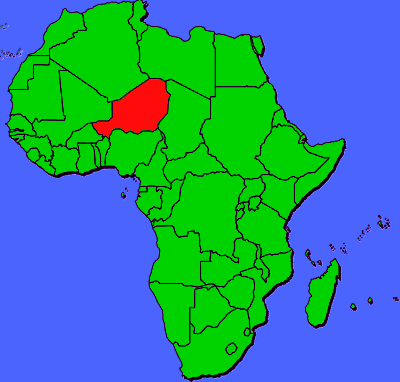
Circle the area on this map

A. Niger is bordered by Algeria to the northwest, Libya to the northeast, Chad to the east, Nigeria and Benin to the south, and Burkino Faso and Mali to the east. One rescue worker speculated that many of victims were children from madrassas (Islamic schools) being taken to Algeria to work.
A. While the Sahara stretches across Africa covering an area almost as large as the United States, it is about 2 million square miles smaller than Antarctica, the world's driest continent. The second largest desert is the Arctic.
D. In the past 10 years, some 2,000 migrants coming from Mexico — men, women, children and the elderly — have died crossing the desert in the southwestern United States.
D. The world's population is expected to soar by 2 billion people by 2050, while rising temperatures cuts into crop production in many of the world's poorest regions. Scientists have concluded that climate change could reduce global food production by as much as 2 percent each decade for the rest of this century, compared with what it would be without climate change.